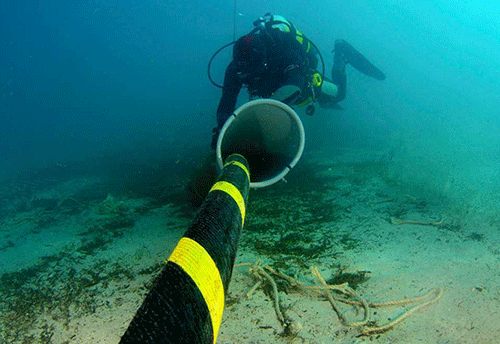A cable repair ship was scheduled to arrive yesterday at the site where the West African Cable System (WACS) was damaged somewhere off the coast between the Democratic Republic of Congo and Cameroon. The damage to the WACS, which occurred on 6 August, definitely impacted Telecom Namibia as some services have been unavailable although the company has been rerouting traffic through other undersea cables to mitigate the impacts on customers.
The damaged cable, reportedly caused by sub-sea rock slides in the Congo Canyon, has hampered Telecom Namibia’s internet access to Points of Presence (PoPs) in Europe. Namibia connects to the SAT-3 submarine cable system (from Cape Town to Europe) which was also damaged in a similar fashion to the WACS.
According to Telecom spokesperson, Nomvula Kambinda, the repairs are expected to be completed by 8 September 2023, depending on the weather conditions.
“We are moving into week four, as the break occurred on the 6th of August 2023. The cable repair ship is en route to the site where the cable break occurred,” Kambinda told New Era.
She added the crucial sub-sea cable is being repaired by a consortium that includes Telecom Namibia, adding that the repairs are generally expensive and that cost estimates have not yet been concluded.
“The cause of the damage to the WACS is not yet confirmed. However, it is believed that the cable break was caused by a rock fall in the Congo Canyon. The damage occurred in the subsea between the Democratic Republic of Congo and Cameroon…Fortunately, the damage has no impact on the routes via WACS to the south, between Namibia and South Africa. Telecom Namibia has a reliable and extensive network with multiple paths within its national and cross borders network, and to its international Points of Presence (PoPs) in South Africa (SA),” Kambinda explained.
The Congo Canyon is a submarine canyon located at the end of the Congo River. It is one of the largest submarine canyons in the world, reaching depths of 1 100 metres and widths of up to 14km.
Laid in 2012, the 14 500 km WACS cable runs from South Africa to the United Kingdom, calling at 12 countries en route. It is owned by a consortium of 12 carriers including Telecom Namibia, MTN and Vodacom and has a total design capacity of 14.5 Tbps.
The 13000km SAT-3/WASC cable, laid in 2001, connects South Africa to Spain and Portugal and lands at eight other countries en route. SAT-3 has a capacity of 340 Gbps and is also owned by a consortium of operators. The two cables previously broke off the coast of Gabon in 2020.
Kambinda stated that the future of internet connectivity in Namibia is bright as Telecom Namibia is committed in ensuring that Namibians have access to high-speed internet they need to participate in the global economy.
One of Telecom Namibia’s major investment commitments, along with other telecommunications service providers, is the new submarine cable called the Equiano Cable System. This system, which has landed in Namibia, represents a total investment of US$1 billion. This cable, owned by Google, is one of the largest submarine internet cables, spanning 15 000 km from Portugal to South Africa.
This cable is Africa’s highest capacity cable and features 12 fibre pairs with a design capacity of 150Tbps.
The cable is named after Olaudah Equiano, a Nigerian-born writer, and abolitionist who was enslaved as a boy and earned his freedom. Equiano is one of Google’s six privately-owned cable systems either live or in development and the 19th subsea cable the conglomerate has invested in overall.


